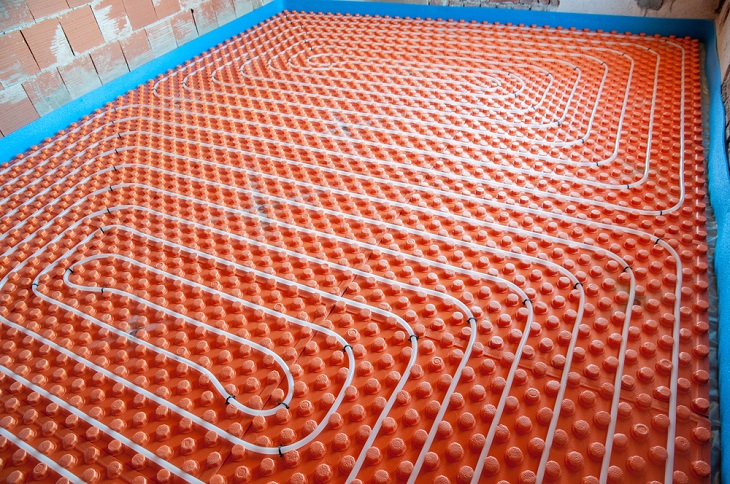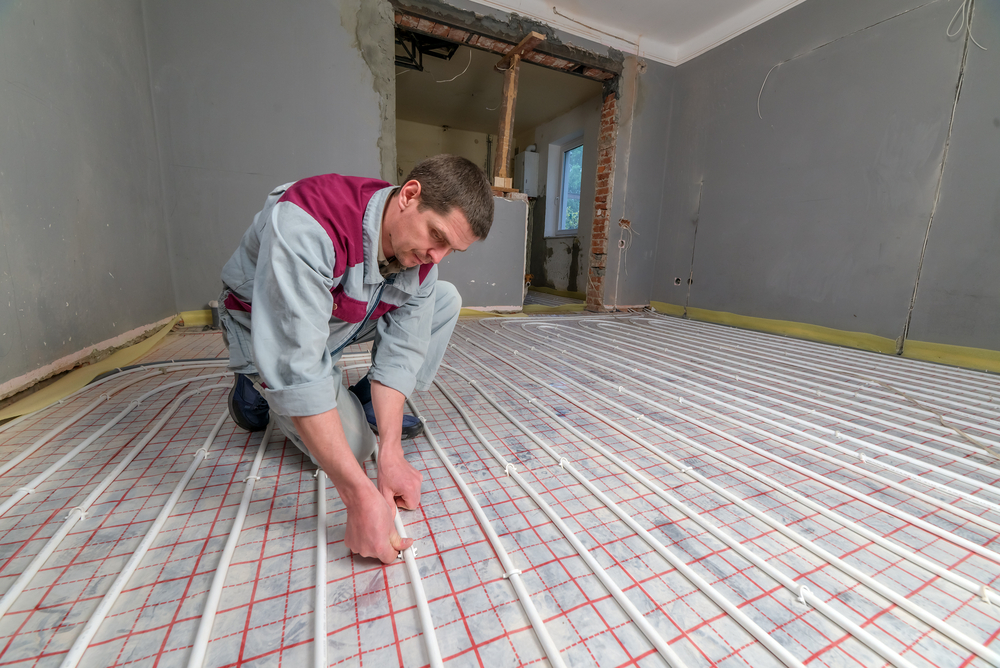
Whoever said that we can’t combine functionality with style clearly hasn’t heard of in-floor hydronic heating systems. They’re an intriguing alternative to traditional heating that may sound futuristic but have roots in ancient Rome. So, let’s put our interior design headgears on and explore – just how do these systems work? What lies beneath those elegantly heated floors that instills marvel and admiration both for their innovative technology and seamless integration into any living space?
With a calculated mix of thorough research and striking imagery, we’ll delve into the advantages of this sustainable, underfoot heating solution that can transform your home’s comfort, and energy efficiency, while maintaining your chosen aesthetic to the highest standard. As we huddle down into the architectural nuts and bolts, we’ll dive into the world of innovative heating solutions, shedding light on the advantages of in-floor hydronic systems, a heating method with both brains and beauty.
The In-Floor Hydronic Heating System: What It Is and How It Works

Hydronic – haven’t heard this term before? Don’t worry, dear readers, it’s simply derived from ‘hydro’, the Greek word for water. A blueprint of the hydronic heating system involves embedded pipes beneath the floor that circulates warmed water, effectively transforming your unassuming floor into a large radiator.
Installation typically involves a layer of a screed, in which the heated pipes are embedded, topped with the flooring of your choice. The fact that these systems can be hidden beneath any surface – be it timber, tiles, or polished concrete – makes them the coveted ‘invisible’ heating solution that won’t intrude upon your carefully designed interior.
Contrasting sharply with forceful fans and dusty vents of typical heating setups, a hydronic system offers not just quiet heating but a liberating interior design freedom. This underfloor bliss achieves your desired temperature in a consistent, and evenly distributed manner – with the added luxury of warm toes in winter!
Why Choose an In-Floor Hydronic Heating System: Unravelling the Benefits
A harmonious blend of technological advancement and design refinement – in-floor hydronic systems are changing the way we approach our home’s warmth. But what benefits do they offer beyond the novelty? Why should you, a discerning homeowner, consider integrating this system into your living space?
As hydronic systems rely on natural convection, it ensures a homely warmth without the dust or noise generated by forced-air systems. This makes them a prime choice for allergy sufferers or those seeking a peaceful ambience in their dwelling.
Moreover, the icing on this heat-filled cake is the energy efficiency of hydronic systems. They run on lower temperatures when compared to the conventional heating methods, significantly reducing your carbon footprint and heating bills. A true win-win, isn’t it?
Weighing the Pros and Cons of In-Floor Hydronic Systems
No solution is perfect, and the hydronic heating mechanism is not an exception. In the interest of impartiality let’s address some potential drawbacks alongside its benefits, to give you a complete overview of what to expect.
The major drawback of the in-floor hydronic system is the installation cost, which can be higher than other heating modes. It may not be compatible with all flooring types and retrofitting in an existing property can be complex.
However, consider this: the higher upfront cost balances against long-term energy savings. Also, radiant heat gives you the added health benefits of a dust-free and noise-free environment, plus the charm of those warm, snuggly floors in cold winters!
The Role of In-Floor Hydronic Systems in Sustainable Architecture
With sustainable living no longer a fad but a conscious lifestyle choice for many, in-floor hydronic systems are seamlessly fitting into the architecture of sustainable homes.
The systems’ energy efficiency marries well with a minimalist aesthetic. A lack of visible components provides a clean, uncluttered appeal. This allows architects to design homes around the principles of simplicity and functionality without the need to make room for bulky radiators or vents.
As our fight against climate change intensifies, the importance of innovative solutions such as hydronic in-floor heating stands out, offering us a bright beacon of hope in curbing emissions and reducing energy consumption.
Conclusion:
In wrapping up, dear readers, we hope you now value the wonder that lies beneath your feet, that could potentially rock your home-world. In-floor hydronic systems are not just a celebration of smart, innovative technology but they also redefine the possibilities for creating safe, comfortable, and sustainable living spaces.
While the initial investment may be seen as steep for some, we cannot overlook the long-term benefits offered – reduced heating bills, better health, freedom of design, and a smaller environmental impact. The question then becomes, can you afford not to consider this hidden gem of home heating?
As proponents of design and architecture that harmonizes functionality and aesthetics, we’re enamored with this discreet warming wonder. Could there be anything more comforting than feeling a gentle, steady warmth even on the chilliest of mornings? Perhaps not. In-floor hydronic systems may just be a luxury we missed unfolding right beneath our feet – a secret tool to add warmth to our homes and our hearts.





